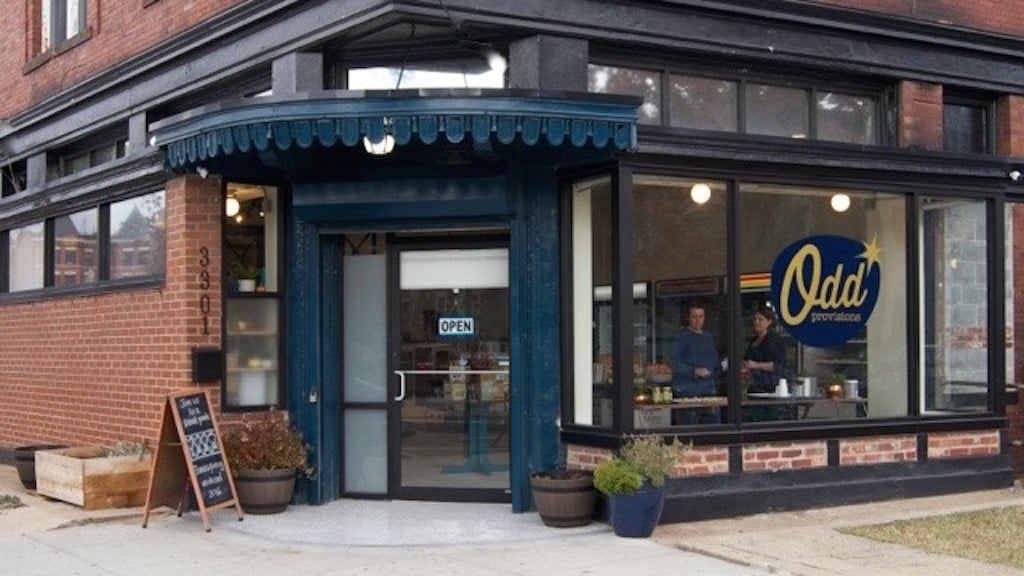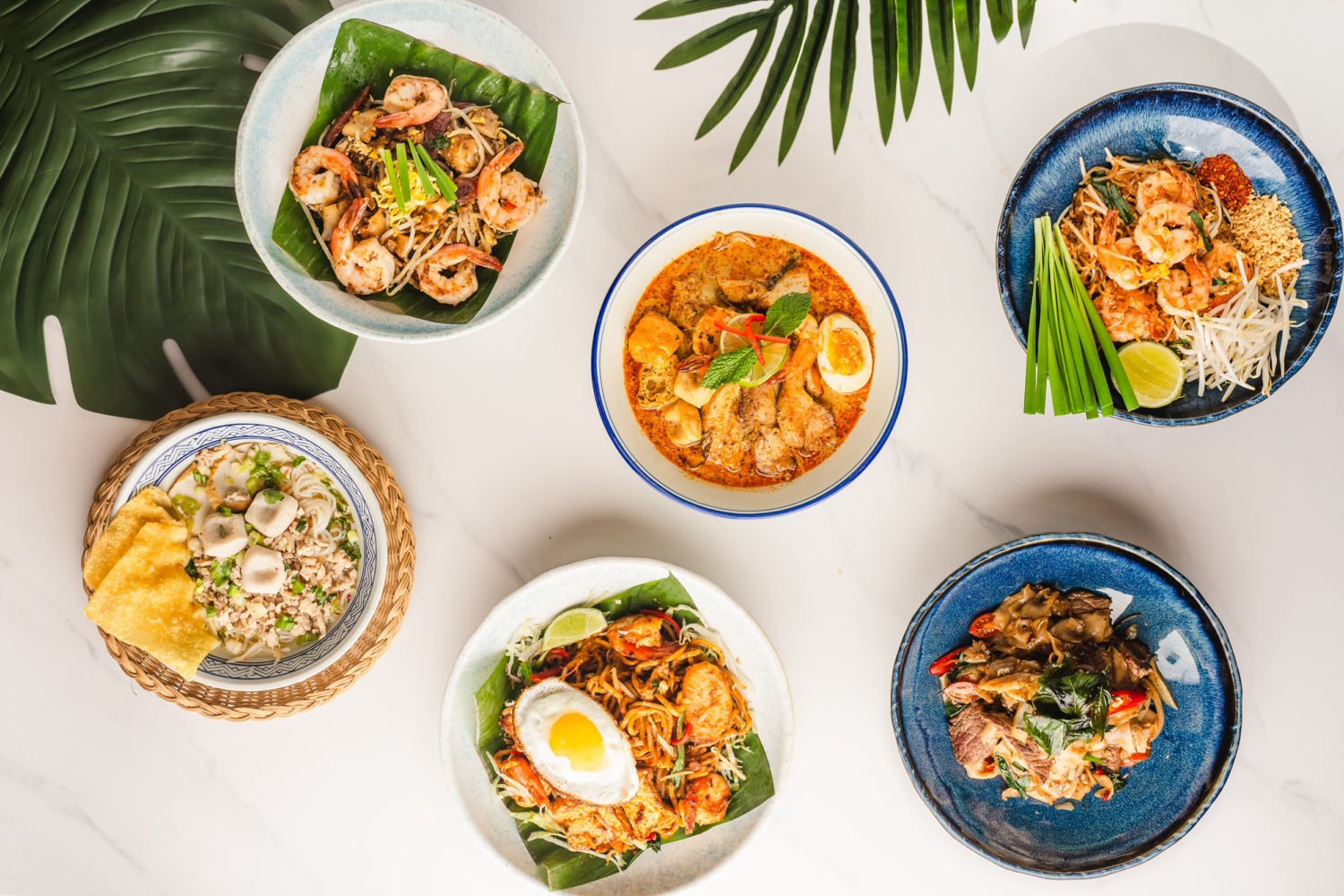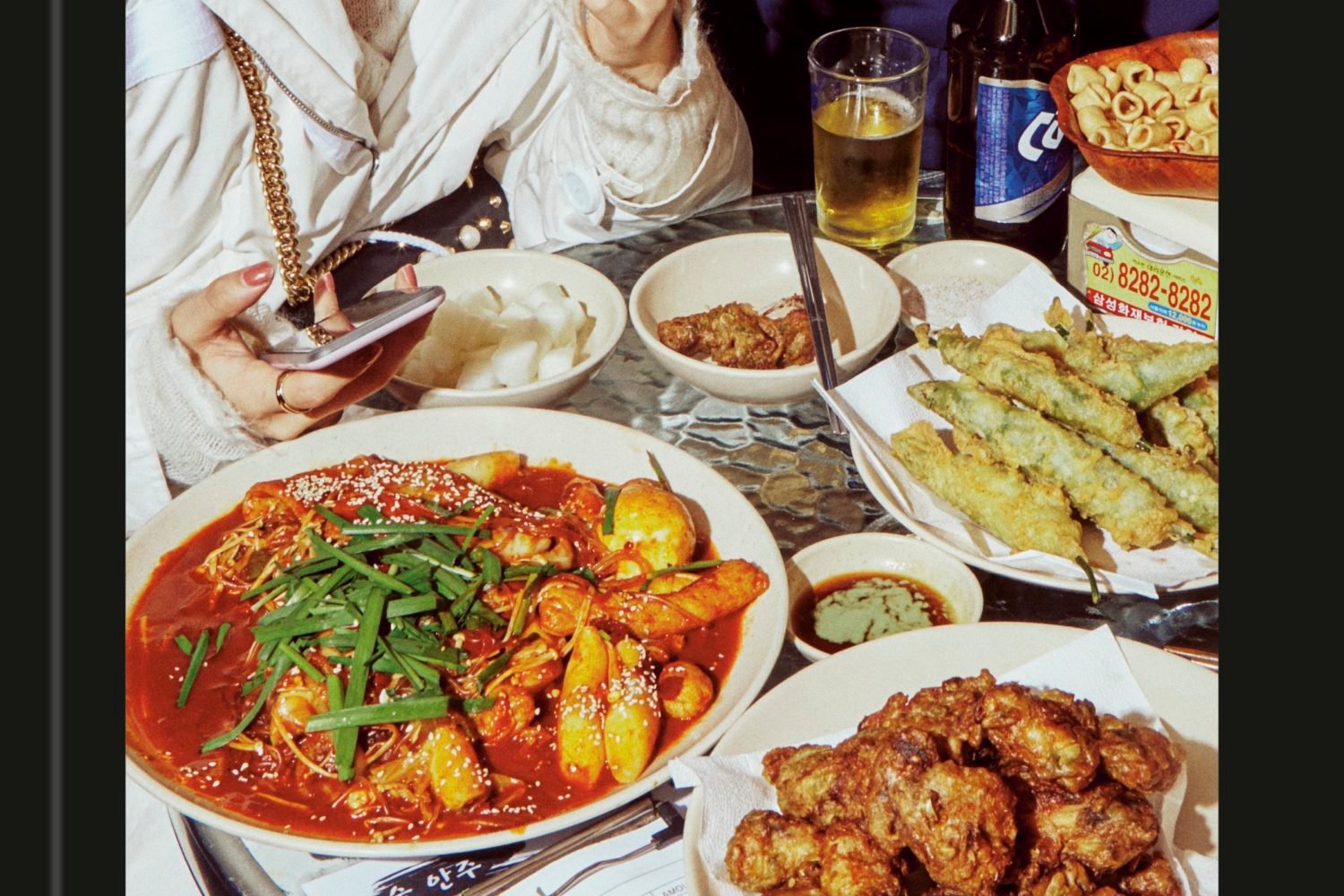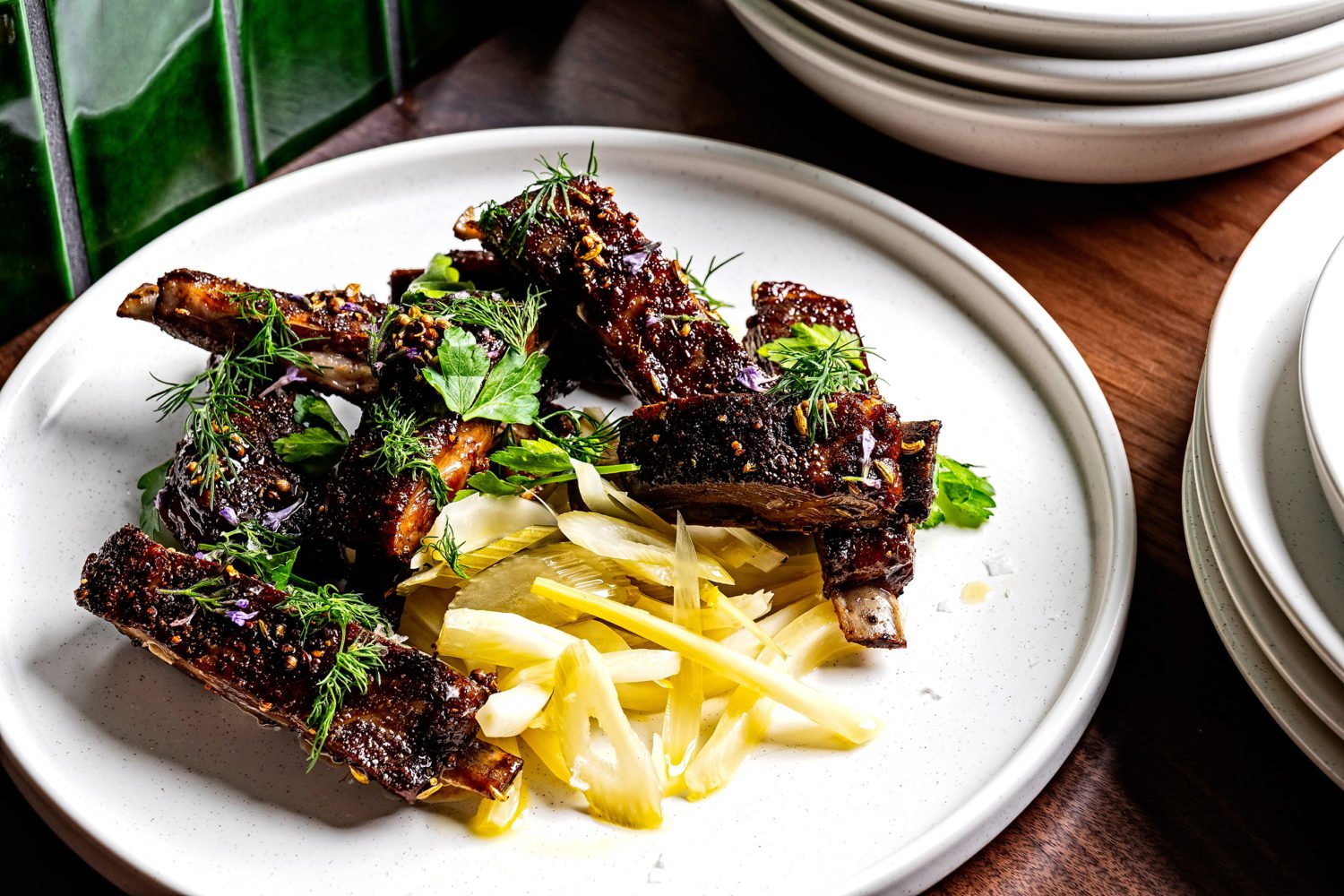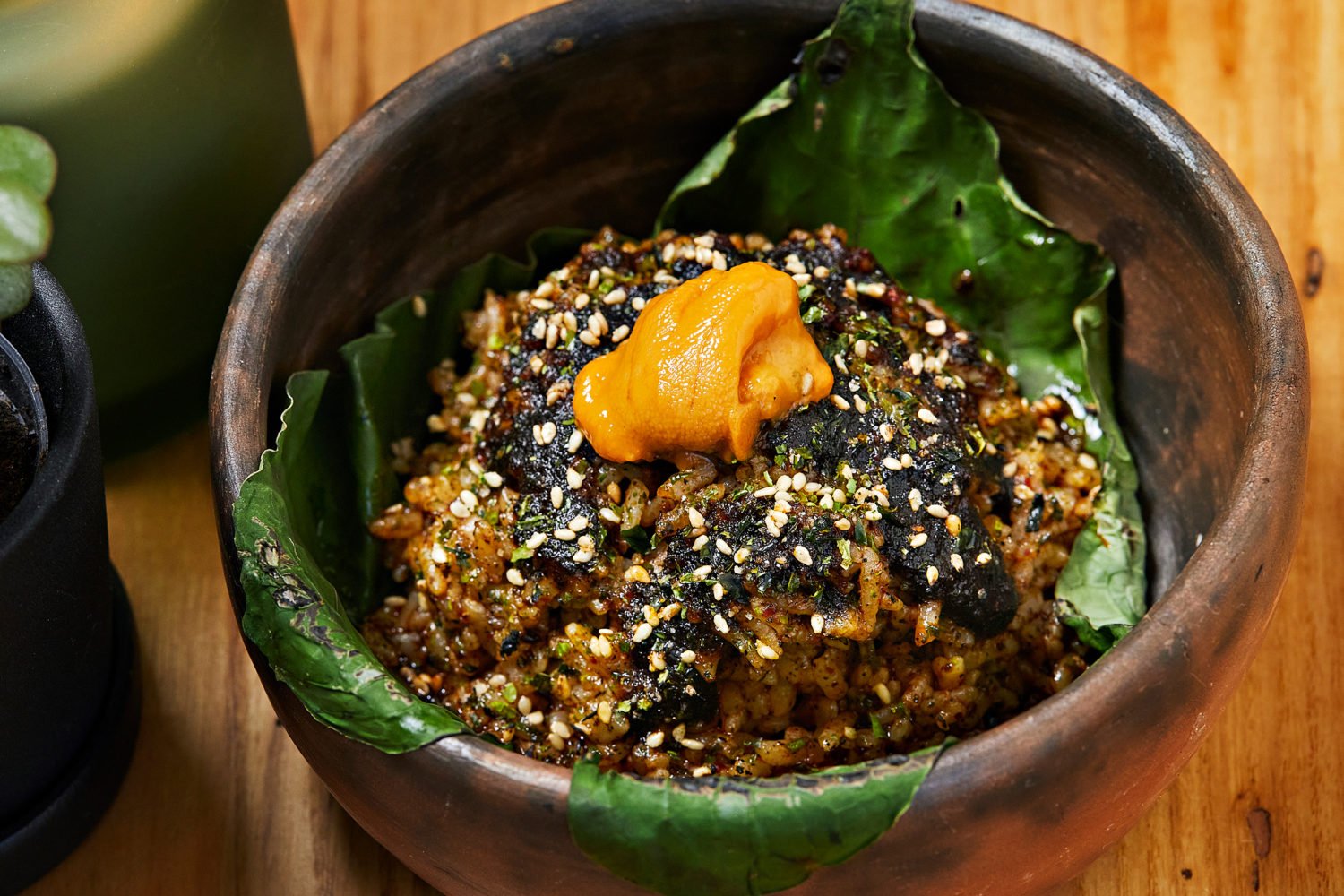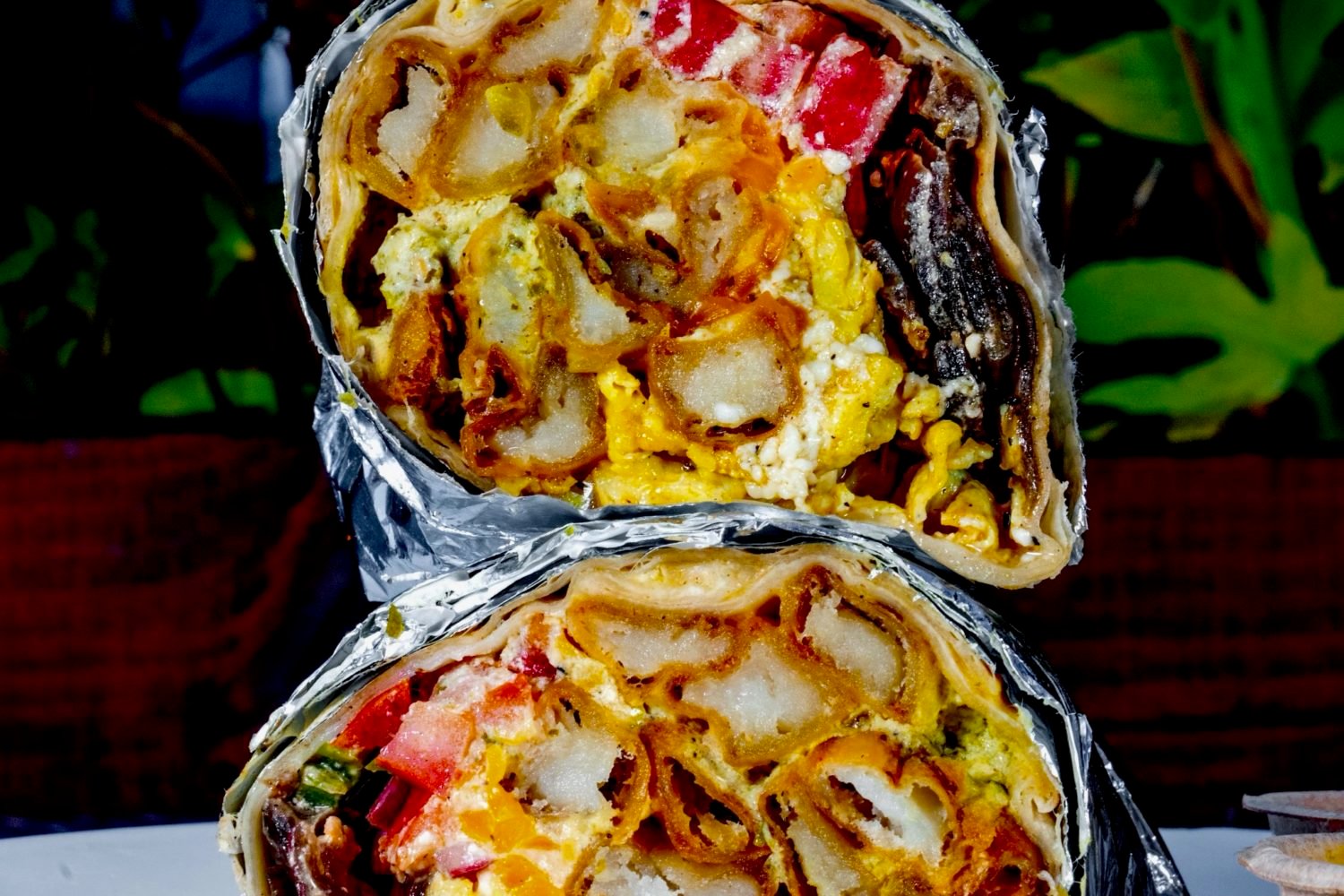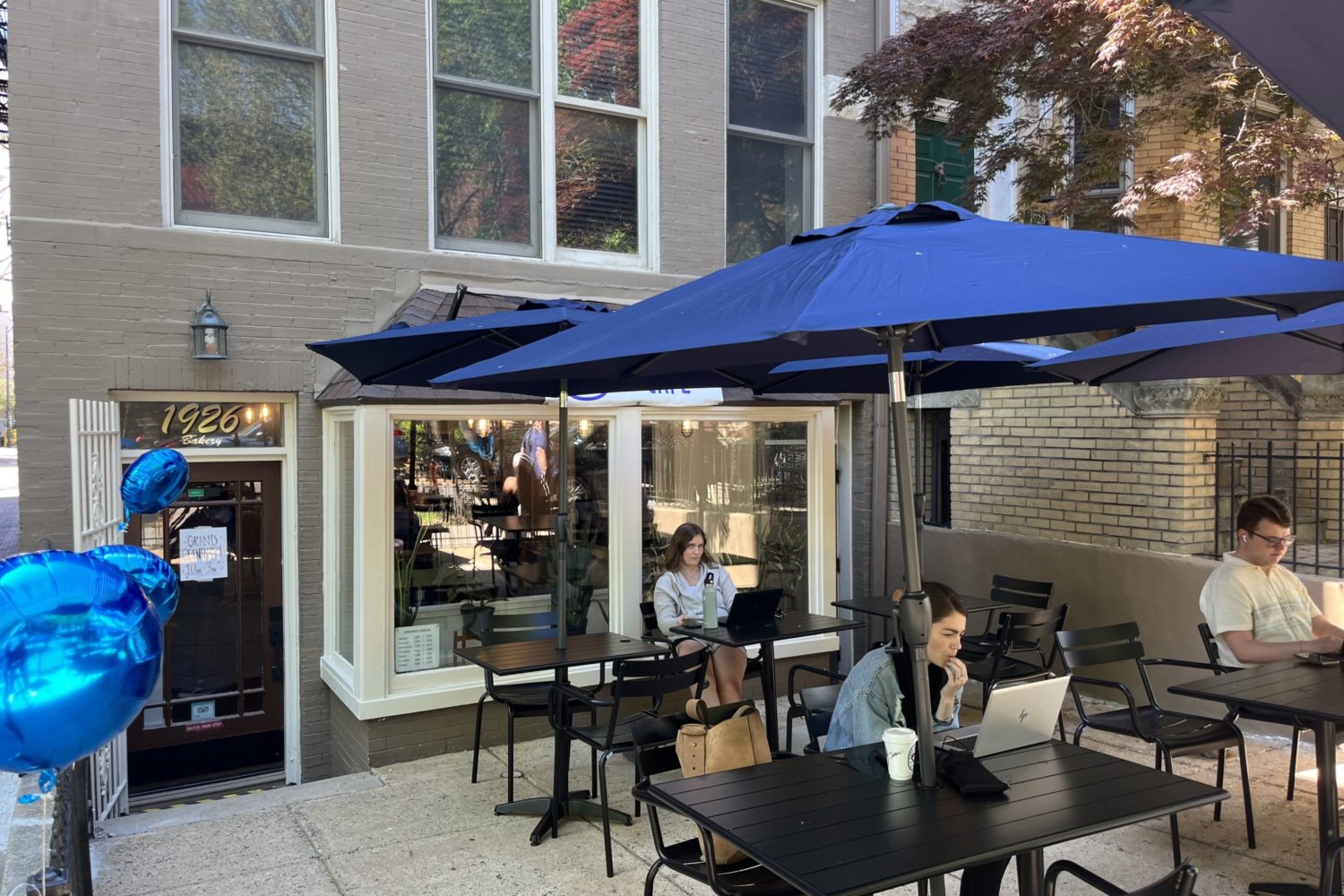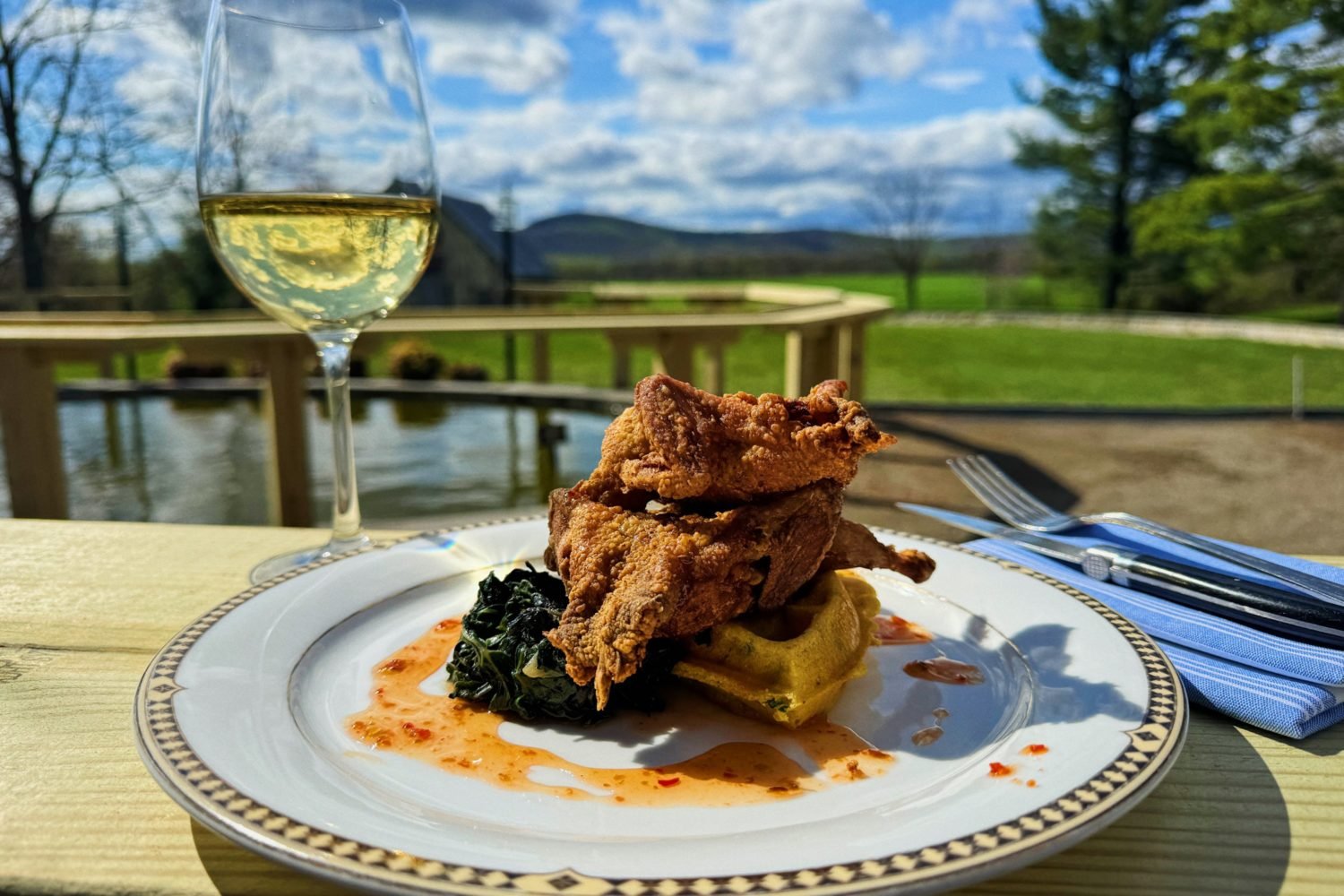The hostess in six-inch heels and clinging dress doesn’t walk the party of four to its table in back of the restaurant—she sashays. Tall, thin, and deeply tanned, she looks as if she’s just walked out of a private party at a swank downtown club.
With its stained-cement floors, industrial ceilings, and fashionably if casually decked-out patrons, Cava—the Capitol Hill spinoff of the Rockville smash of the same name—gives every indication of being the sort of self-aware, style-minded place that seems to open every other week: a noisy resto-lounge catering to the young and affluent with small plates and wines by the glass.
But look again. There, above a line of gleaming wood tables, is a mural of sad-eyed men in Greek fishing caps, nursing glasses of ouzo and playing backgammon. On the side wall are black-and-white family photos of the kind once common in big-hearted places that wore their immigrant heritage on their walls.
Owners Ted Xenohristos, Ike Grigoropoulos and Dimitri Moshovitis, all under 40, aren’t of that generation, but they’re not entirely of theirs. When the original Cava opened three years ago in Rockville, it was as if an old-time soul track had been slipped into a mix of generic pop. Amid the chain operations, here was a place with personality, warmth, and character—a restaurant that, for all its smooth wooden floors, looked and felt as if it had been around for ages. Cava seemed a smart and heartfelt assertion that it wasn’t necessary to sacrifice authenticity to be sexy. In no time at all, the wait to get in on weekend nights was an hour.
This second Cava, fortunately, isn’t much different. The surprise isn’t that it toggles so smoothly between trend and tradition; it’s that it doesn’t come across as a calculated copy of the first Cava. Little wonder that the denizens of Capitol Hill’s Barracks Row and Eastern Market, aswim in taverns and bars and restaurants, are filling Cava’s tables.
The untrendy and the fad-averse—in other words, a good many people over 40—might be tempted to pass Cava by, as did some would-be diners on a recent Saturday night after scanning the crowd and the buzzing bar scene. Too bad: Had they taken a flier, they would have found that the kitchen, not the bar, is the heart of the operation.
The menu covers a lot of ground—dips, cheeses, salads and soups, a whole fish (roasted and flavored with herbs and olive oil), and a variety of meat and seafood preparations—and tends to the zesty and rustic. A server, swinging by to ask whether you’ve “dined with us before” (can we lose this tired shtick?), will point out that the kitchen’s mezze are bigger than tapas and other small plates—the owners’ way of saying, perhaps, that Cava isn’t like those other noisy, trendy spots with their overproduced dishes containing two or three bites.
The prettiest plate is a traditional salad of watermelon, feta, and mint, which Cava presents in building blocks of fruit that have been salted, drizzled with olive oil, and topped with cheese and a sprig of mint. Elsewhere, meatiness trumps prettiness nearly every time. Mini-burgers are small but substantial lamb sliders with a thick sheet of feta and a smear of harissa dip. Eating them without looking indelicate is nearly impossible, and that’s part of the point.
Many dishes all but demand that you get your hands messy, from the “disco fries”—long-braised lamb and veal, spooned like a sloppy joe atop a mound of French fries—to the miniature pork gyros and pork souvlaki, which come wrapped diner style in foil packets, to the baby lamb chops served crossed with the bones jutting upward, begging to be picked up with your fingers.
Cava doesn’t just imbue trendy dishes with heart and depth; it rings changes on classic dishes, lightening, refining, and improving them. Avgolemono, the hearty chicken-and-lemon soup that many Greek cooks send out too tangy or too sludgy, is excellent. Triangles of phyllo dough stuffed with salty Dodonis feta and goat cheese—far from the soggy messes encountered at wedding receptions—are delicate and make for a wonderfully creamy, crunchy handful. A crock of tender meatballs braised in a sherry-spiked tomato sauce is as comforting as any grandmother’s and not nearly as heavy. Each of the olive-oil-based dips—skordalia, taramasalata, and hummus—is vivid and bright.
The dips and meatballs in particular call for triangles of hot, olive-oil-swabbed pita, but Cava doesn’t make its own—a rare instance of the restaurant’s not seizing the chance to elevate a good dish to a very good one.
Cava’s dual mission—anchoring itself in an ancient tradition while striving for contemporary elegance—comes through most brilliantly at dessert. Take the Greek yogurt, thick, tangy, heaped high in the bowl, and topped sundae style with dark honey and walnuts that have been toasted to bring out their depth. Or the loukoumades, puffs of fried dough that are smaller than doughnuts and lighter than most beignets. The galaktobouriko, its pastry neatly and cleanly balanced with its rich custard, will seem like a marvel to anyone who first encountered the dish in a homestyle Greek restaurant.
Rooting yourself in tradition is no guarantee of greatness. Sometimes, maybe because of the size of Cava’s menu and the crowds, what hits the table seems less like a smart variation on tradition than a wan knockoff of a hearty classic. A dish listed as “baked shrimp”—basically a shrimp saganaki in which the star is submerged in a casserole of tomato sauce and crumbled feta, then baked—is faithful to the original; it’s also dull. A bowl of Kastoria beans came slightly underdone and coated in a zesty tomato-onion-and-garlic sauce that would be hard either to lighten or improve on. A plate of asparagus in a lemon vinaigrette was overdressed and felt slapdash.
One of the problems with eating here—a problem endemic to places that emphasize variety and number of dishes—is that plates tend to arrive all at once, creating traffic jams on the table. Things go cold or flat. The solution is to ask your server to bring only a few selections at a time—ensuring that your meal will proceed at the pace you want. The good news is that Cava’s young, energetic waiters are inclined to want to help. I encountered only one unhelpful dud in the bunch. More typical was the server who set down a watermelon salad and exclaimed, “I love this. Awesome dish. Enjoy.” He turned to the next table, a group of six, and said, “So how are we doing over here? Are we loving everything?” They didn’t appear to mind the pileup of plates, which they passed back and forth and dove into with great eagerness, licking their fingers as they did.
Recession? What recession? We may be cutting back, but most of us still want options when we go out to eat, and we want to be able to dig into big, bountiful plates of soulfully prepared food. As well as any restaurant does, Cava understands.
This review appears in the September, 2009 issue of The Washingtonian.






